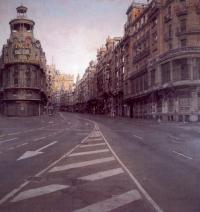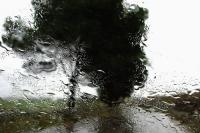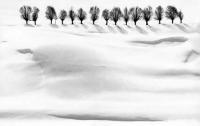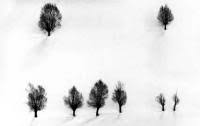The correspondence between V. Erice and A. Kiarostami
A couple of weeks ago I visited for the first time the exposition Correspondences by Víctor Erice and Abbas Kiarostami. Since that day, I came back two more days and I will probably do it some more. The pass for the Pompidou center lets you visit only one part of the exposition, without the need of running or staying inside the museum for an entire day. Well, the perfect dimension for my intentions.
I don’t want to describe the exhibition, many critics and comments are available on line. I’d like to report some personal impression though, and I think at the end it is the interesting part. In any case, the exposition will be at Pompidou until 7th January 2008.
When a gentle wind blows on a pile of white papers
I got inside the center on the defensive, because even if Pompidou is one of the most important museum of the world, sometime it offers the most boring expositions ever, they could almost not be visited. Contradictions of the contemporary art…
I avoided “The art of childhood”, as I’m not a lover of extracts, anthologies and actually not even children. But I did admired the poetical Alumbramiento, so delicate and refined, with a wonderful black and white picture. That emotional singing that magisterially closes the short movies, from the antique scent, as it would be a universal hymn that we all recognize.
I then got inside the room where the “notes” of the documentary about the painter Antonio López García were projected. I looked at them with a mixture of interest and a little of tediousness. Interest, because the documentary explored many themes conceptually fascinating. Tiresomeness because I still had before my eyes the images of the short movies, the emotion of the singing that was still resonating inside and the crude style of the documentary left me empty handed.
This is myself; the concept can’t touch me if it’s not followed by emotional and aesthetic strong contents. The majority of conceptual artists try to completely take off all the expressive, not cerebral contents from their works. I understand it, it is a coherent choice. But I’m not able, and most of all not interested. I can’t live without poetry. I can be intellectually involved in a philosophical debate, I can have a position, play my part, but I will always need pointlessness, I will always have the sensation that I will find what really value somewhere else, out in the street, among people, during wars. I get quickly bored from intellect, brain or theory if not accompanied by a message that can reach the most sensitive part of us, in that vague territory of hardly explicable but highly recognizable sensation. It is only important if ça sort des tripes, as French say.
Except for this polemic divagation, videos were interesting and I looked at them with attention. Because I got some reminiscences of Antonio Lopez from that kind of Spanish culture learned by Ana, her family and my trips in Spain, and because it is fascinating to see an artist at work, is something that rarely happen.
Usually paintings are shown and put on a wall only once finished, immortalized in a condensation of space and time that the final work represents. See the painting while painted, see it while taking shape, take away its first characteristic, which is being the summary of all the time it took to paint it, to give back the progressive dimension that created it. Moreover this is a particular point for Antonio López, because he often work on the same painting for years, not to say decades, overlapping continuously the brushes and condensing the reality of the subject on the canvas, to constitute a sort of concentrated essence of reality, which goes further than the subject itself, it is the idea of the subject, it is the thickest representation of the noumenon he can give.
I was just thinking about this fact when I started walking toward the next hall that -I read this only the second time, when I came searching for those sensations- should contain “the tumult of the world, the silence of picture”. The most correct title.
A room full of shadow, almost dark. Desert and completely empty, but a wall with an enormous window. At the center of the windows there was, unique work of the entire room, the painting “Gran Via” by Antonio López. The same as the one Erice used for his video that I just looked at, video where the director put the camera in the exact point where Antonio López put his easel years ago, same framing, same place but this time there’s no urban view in front of our eyes, rather Madrid with its cars darting inside Gran Via, lights on and off during the night, noises that animates every metropolis. You enter the room with all the movie images in front of your eyes and suddenly the real paint is there.
For a moment I strongly felt a fearful slipping of reality. Everything mixes inside my head, with violence. All the different plans of reality, of its representation, fall apart and loose their significance. I don’t know where I am, I don’t know if I’m looking to Antonio López painting, if I’m in the middle of the street with all the cars running near me or if I entered the pictorial concentrate of the Gran Via essence. I don’t understand if I’m looking at Victor Erice video, that represents my memories of Madrid and its principal street, the Gran Via Antonio López looked at while painting or the one living while Victore Erice recorded.
Where am I? Which is the real world?
How many realities, how many plans of knowledge, usually well piled in our taxonomic occidental system, suddenly flew away, as wind that suddenly blows a pile of papers away in a room, without bottom or top anymore; in front of the eyes only a whirlwind of white pages. Around me, the world is breaking into thousands of pieces, I feel like falling into nothingness and Montale’s poetry occurred into my mind with glacial lucidity:
Maybe one morning, walking in dry, glassy air,
I’ll turn, and see the miracle occur:
nothing at my back, the void
behind me, with a drunkard’s terror.
Then, as if on a screen, trees houses hills
will suddenly collect for the usual illusion.
But it will be too late: and I’ll walk on silent
among the men who don’t look back, with my secret.
For a short moment my head spun; the museum around flaked off, for once I had jumped out of the matrix without choosing the red pill to discover how deep is the White Rabbit den. The veil of Maya suddenly came down as a veil that furls and cover the entire jetty of a ship, avoiding the sight of the entire sea.
It was one of those moments when reality totters for a while and you feel like you’re on the edge, one step away from illumination and madness, near near to slip, and the only thing I can say in my defense is that it was fucking well-done, with all the sounds recorded in Gran Via on the background and a wise play of light on the paint to re-create the dazzle of cars. They enlightened the fuse then I blew on it…
I came out with goose bumps and a huge turmoil inside my chest. One of the strongest aesthetic-emotional experiences of the last years. I hope it is clear now the reason why conceptual art often leaves me cold.
There’s no life without poetry.
Those special rainy days
At the center of the exposition there’s actually a projection of the correspondence between Erice and Kiarostami that is the title of the exposition itself. Looking to the short movies, the nature of the identity and direct relation between the two (that is the sense of the exposition) is cause of doubts. There are surely lots of affinities but also differences, so why did the organization proposed a circular and mirror path instead of restricting itself to underlining similarities and divergences? I think that for the central part of the exhibition it is better to take this four hands work for what it is: a collection of animated letters, often stunning, between two great personalities of the cinema.
My favorite “letter” is absolutely Kiarostami’s about rain. We’re on a car, moving in a rainy city. There’s water running on the windshield, there’s lights of other cars, trees and houses have shaded contours. Abbas is talking, he says that maybe we do not know, but in Iran it rains only some days in spring and some days in autumn, and that’s the reason why Iranian always have some beautiful memory related to rainy days. He usually travels all alone, but this time he wants to be with Erice.
And here’s a slideshow, substituting the video, composed by all the pictures took inside the car, a piece of classical music on the background. They’re all pictures of the wet glass. Drops draw regular elements, long streaks when pushed by the speed, huge pools when the tension is superficial. The panorama saw through a glass like this, with its infinite game of diffraction and refraction, turns into a splendid impressionist paint. That shaded but so vivid atmosphere, it was like being there, like perceiving exactly the light that covers things during rain, like feeling the sensation to travel by car in that particular way. It often seems to look at real brushstrokes, sometime tree brunches roll into balls as Van Gogh features. Wonderful, poetical, sensitive. Images are so intense that they made me cry.
Some steps forward and the same pictures are printed and hang at the wall. I was a little disappointed; they are grey and flat. Well, I do know rainy days are grey and flat, or probably I saw the effect of a projector that uses the wrong output and twist the gamut (did Pompidou really made such a terrible mistake?). Although it could have been a case, the effect in the video has been magnificent and superior to the “correctly” printed pictures. The excessive contrast turns them into magical landscapes; transmission instead of reflection tops them up of light, turns them into abstract paintings, improving the expressive impact a lot.
Between all the things I have to notify about the exhibition, some wonderful fabulous Abbas’ pictures about trees and snow. Clean and essential, marvelously printed in huge format. Washed and blinding whites, dark blacks are pure signs, calligraphy on snow.
Real pleasure for eyes.







